#Industrial Trends
Explore tagged Tumblr posts
Text
Opportunities in the TAED Market: Growth Drivers and Key Trends

Tetraacetylethylenediamine (TAED) is not just another chemical compound—it’s a game-changer for industries striving to balance efficiency, cost-effectiveness, and sustainability. Whether you’re in the textile sector, the consumer goods cleaning care space, or the paper and pulp industry, TAED has likely impacted your processes in ways that are both profound and practical.
The Significance of TAED Across Industries
Tetraacetylethylenediamine (TAED) Market size is projected to grow from USD 881 million in 2024 to USD 1,070 million by 2029, registering a CAGR of 4.0% during the forecast period.
TAED, an organic compound widely used as an activator in oxygen-based bleaching agents, is valued for its ability to enable efficient bleaching at lower temperatures. When paired with hydrogen peroxide, it produces peracetic acid—a highly effective oxidizing agent. This unique chemical reaction has made TAED an essential ingredient across diverse industries:
Textile Industry:Bleaching textiles without compromising fabric integrity is a persistent challenge. TAED addresses this by allowing effective bleaching at reduced temperatures, helping textile manufacturers save energy while achieving brilliant whiteness and maintaining fabric strength.
Consumer Goods and Cleaning Care:From dishwashing tablets to laundry detergents, TAED has become synonymous with effective, low-temperature cleaning. Consumers want spotless results without the environmental guilt, and TAED delivers by cutting down on energy consumption during the wash cycle.
Paper and Pulp Industry:For the paper and pulp sector, transitioning away from chlorine-based bleaching processes is vital to meet stringent environmental regulations. TAED provides a greener alternative, ensuring high-quality, bright paper production without the associated ecological impact.
Key Drivers of TAED Market Growth
The growing relevance of TAED can be traced to several trends shaping today’s industrial landscape:
Sustainability at the Forefront:Companies worldwide are under immense pressure to adopt eco-friendly practices. TAED, being biodegradable and non-toxic, aligns perfectly with this shift, helping businesses meet regulatory requirements while reducing their environmental footprint.
Energy Efficiency Demands:Rising energy costs have forced industries to rethink traditional high-temperature processes. TAED’s efficiency at lower temperatures doesn’t just cut costs—it also supports corporate sustainability goals.
Evolving Consumer Preferences:In the cleaning and personal care sectors, modern consumers are demanding products that are not only effective but also environmentally conscious. TAED’s role in enabling low-energy, high-performance cleaning solutions meets this demand head-on.
Global Market Insights: Regional Dynamics
The TAED market is witnessing diverse growth patterns globally:
Europe:Europe’s stringent environmental regulations have made it a leader in TAED adoption. The region’s well-established textile and cleaning product industries have embraced TAED for its sustainable benefits.
Asia-Pacific:Industrial expansion in countries like India and China has fueled demand for TAED. With growing urbanization and a rising middle class, the region is experiencing increased demand for both high-quality textiles and sustainable cleaning products.
North America:In North America, TAED has carved a niche in the pulp and paper sector, where its eco-friendly bleaching properties are helping businesses meet rigorous environmental standards.
Challenges the TAED Market Must Overcome
Despite its advantages, the TAED market is not without obstacles:
Volatility in Raw Material Costs:Raw materials used in TAED production are subject to price fluctuations, which can create challenges for manufacturers in maintaining stable pricing.
Competition from Alternatives:The market has seen competition from other bleaching agents that promise similar efficacy. To stay ahead, TAED manufacturers need to innovate and diversify applications.
Complex Regulatory Landscapes:While regulations promote sustainability, navigating varying regional compliance standards can be daunting, particularly for global players.
The Road Ahead: Opportunities and Innovation
The future of TAED looks bright as industries increasingly prioritize green chemistry and energy efficiency. Innovations in TAED formulations, such as enhancing its efficacy for emerging applications like wastewater treatment, are expected to unlock new market opportunities. Additionally, collaborative efforts between industries and researchers may yield breakthroughs in cost optimization and broader industrial usage.
To know more Download PDF Report :
As industries evolve to meet the twin demands of performance and sustainability, the role of TAED becomes ever more significant. For businesses in the textile, cleaning care, and paper and pulp sectors, adopting TAED is not just about staying relevant—it’s about leading the charge toward a greener future.
If your business operates in these fields, it’s time to explore how TAED can enhance your processes, reduce costs, and help you meet environmental standards. With the right strategies and investments, the potential of TAED to revolutionize industries is immense.
#TAED Market#Market Opportunities#Growth Drivers#Key Trends#Sustainability#Industry Insights#Market Analysis#TAED Applications#Chemical Industry#Green Chemistry#Industrial Trends
0 notes
Text
I do sort of wish western anime fans would analyze anime and manga from a framework of japanese historical and cultural context. Specifically a lot of works from the 90s being influenced by the general aimlessness and ennui that a lot of people were experiencing due to the burst in the bubble economy and the national trauma caused by the sarin terrorist attack. I think in interacting with media that’s not local to our sociocultural/sociopolitical sphere it’s easy to forget that it’s influenced and shaped by the same kinds of factors that influence media within our own cultural dome and there ends up being this baseline misalignment of perception between the causative elements of a narrative and viewer interpretation of those elements. It’s a form of death of the author that i think, in some measure, hinders our ability to fully understand/come to terms with creator intent and the full scope of a work’s merits
#exilley's diary#this is about utena btw like. yeah its feminist and a coming of age horror story but also#it was in part ikuhara’s response to the changes he observed in the corporate anime industry and an attempt to subvert those trends#it doesnt really help that i feel certain aspects of the show are filtered through translation and certain cultural emphasises are lost#like for instance. the blood type symbolism. or wakaba’s gestures with making packed lunches#theyre incredibly japanese expressions of conventional gender roles that non-japanese audiences might not fully resonate with
27K notes
·
View notes
Text
Have you ever wanted to play a cute monster taming game with lots of love and heart put into every inch and corner of it by a Team of fantastically talented artists?
Me too!! Too bad it got cancelled literally a few weeks before it was going to be anounced!
Artist Nicholas Kole on twitter along with many other talented artists have been sharing their work of nearly 4 years on this game. I cant imagine the heartbreak of working so hard on this project only for it to get canceled right before Release and everyone on the Team to get laid off.
It was meant to be an open world, minecraft inspired builder, with all sorts of unique creatures with various skins, variations depending on biomes, and even petting animations. That you could tame! It also had a large amount of beautiful and unique character customization. Here's some of the art ( NOT MY ART ) for the project!
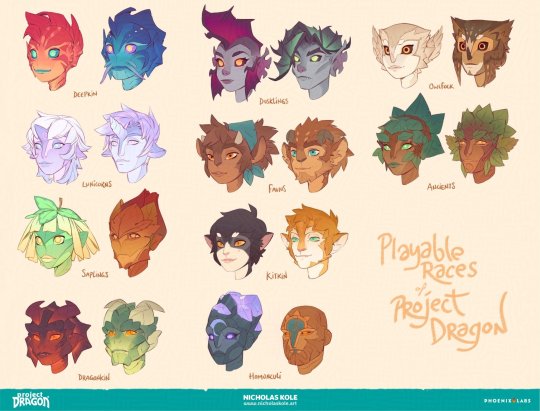

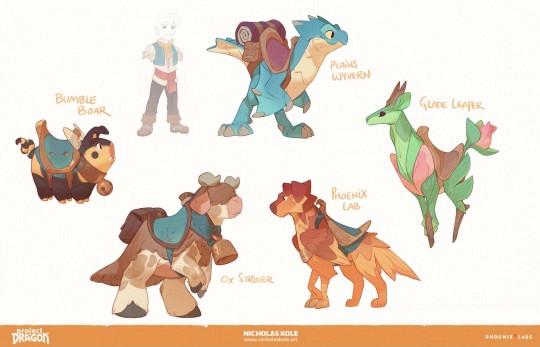
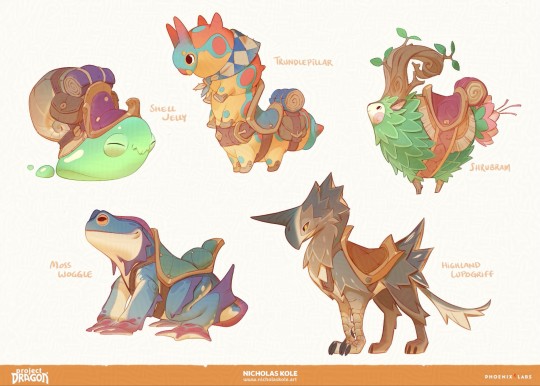
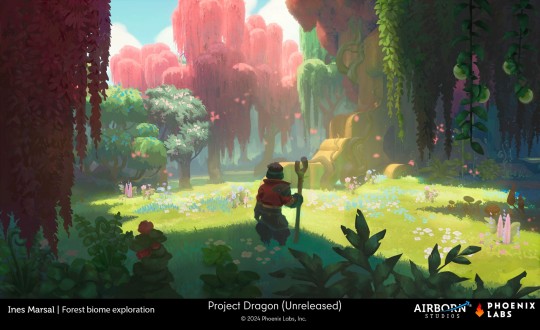
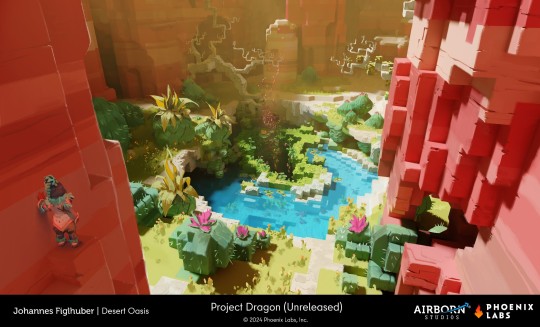
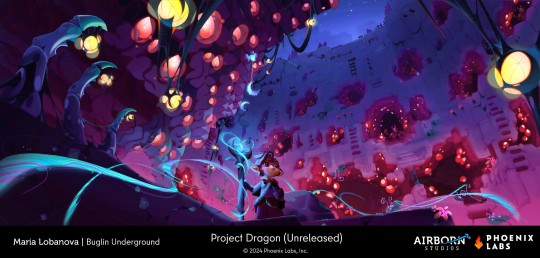

Apparently alot of this game was near finished, coded, etc! ( ART ABOVE IS BY NICHOLAS KOLE , JOHANNES FIGLHUBER, INES MARSAL, AND MARIA LOBANOVA )
I dont know if the artists can look into crowdfunding ( the Studio still may own the IP ) , but myself and a few others have been trying to get the hashtag #bringbackprojectdragon get some traction on twitter! Maybe if the internet raises enough stink, the Studio might pay attention. Im not sure how likely that is but I desperately want thus game to exsist, it would be a dream game for me and many others im sure. So please consider joining in if you have a twitter.
#Not my art#nicholas kole#project dragon#creature taming game#creature concept art#game#please get this hashtag trending i would die for a game like this#im devastated#my autism would have me obsessed with this for years#dragon#animal game#taming#video game#pheonix labs#xbox#game dev#game development#gaming industry#games industry#layoffs
3K notes
·
View notes
Text

Pictured: large screens on the side of and inside buildings, showing the PC Windows "blue screen of death".
#digimon#trending#windows#crash#referencing Windows computers all over the world and in industry crashing to blue screen because of software error with CrowdStrike
2K notes
·
View notes
Text

this is so sad I don't think i need to add anything
#radblr#radical feminism#radical feminists do interact#feminism#radical feminists please touch#radical feminist community#radical feminist safe#radical feminists do touch#gender critical#gender abolition#terfblr#terfsafe#terfism#makeup#beauty industry#beauty trends
950 notes
·
View notes
Text
I think 90% of my gripes with how modern anime looks comes down to flat color design/palettes.
Non-cohesive, washed-out color palettes can destroy lineart quality. I see this all the time when comparing an anime's lineart/layout to its colored/post-processed final product and it's heartbreaking. Compare this pre-color vs. final frame from Dungeon Meshi's OP.
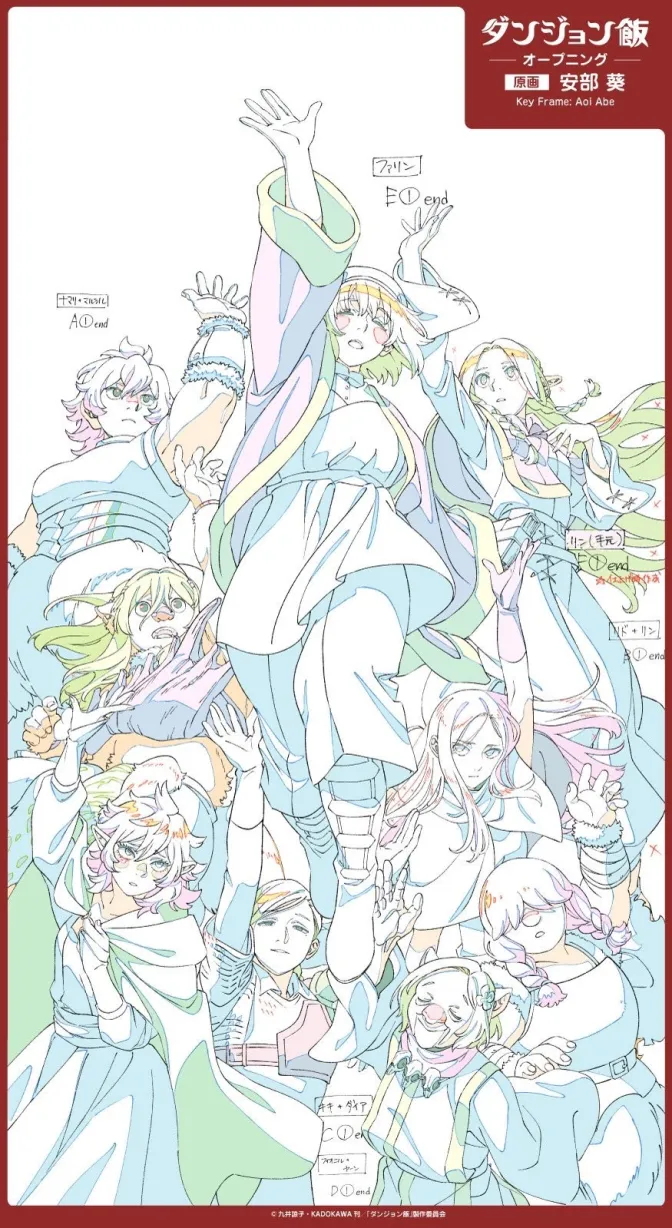
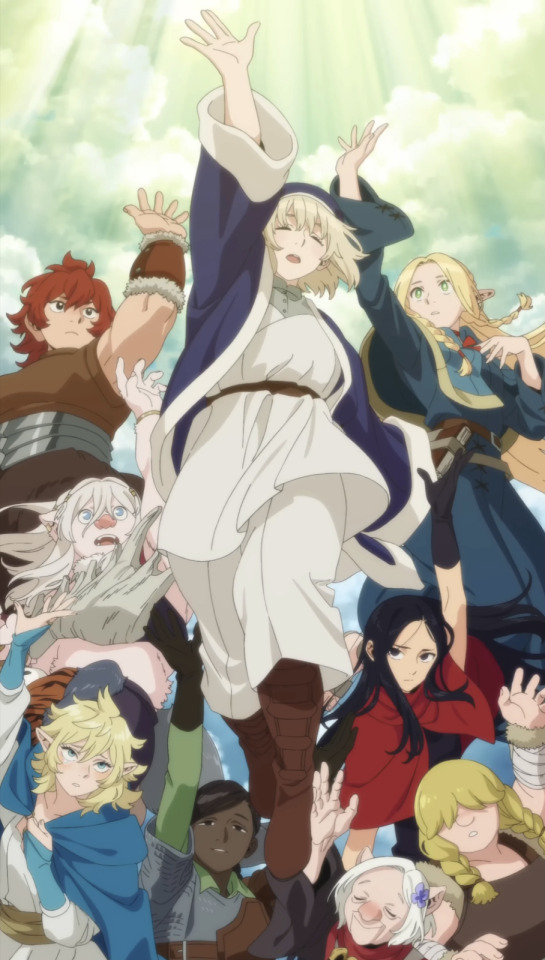
So much sharpness and detail and weight gets washed out and flattened by 'meh' color design. I LOVE the flow and thickness and shadows in the fabrics on the left. The white against pastel really brings it out. Check out all the detail in their hair, the highlights in Rin's, the different hues to denote hair color, the blue tint in the clothes' shadows, and how all of that just gets... lost. It works, but it's not particularly good and does a disservice to the line-artist.
I'm using Dungeon Meshi as an example not because it's bad, I'm just especially disappointed because this is Studio Trigger we're talking about. The character animation is fantastic, but the color design is usually much more exciting. We're not seeing Trigger at their full potential, so I'm focusing on them.
Here's a very quick and messy color correct. Not meant to be taken seriously, just to provide comparison to see why colors can feel "washed out." Top is edit, bottom is original.
You can really see how desaturated and "white fluorescent lighting" the original color palettes are.
[Remember: the easiest way to make your colors more lively is to choose a warm or cool tint. From there, you can play around with bringing out complementary colors for a cohesive palette (I warmed Marcille's skintone and hair but made sure to bring out her deep blue clothes). Avoid using too many blend mode layers; hand-picking colors will really help you build your innate color sense and find a color style. Try using saturated colors in unexpected places! If you're coloring a night scene, try using deep blues or greens or magentas. You see these deep colors used all the time in older anime because they couldn't rely on a lightness scale to make colors darker, they had to use darker paints with specific hues. Don't overthink it, simpler is better!]
#not art#dungeon meshi#rant#i'm someone who can get obsessive over colors in my own art#will stare at the screen adjusting hues/saturation for hours#luckily i've gotten faster at color picking#but yeah modern anime's color design is saddening to me. the general trend leans towards white/grey desaturated palettes#simply because they're easier to pick digitally#this is not the colorists fault mind you. the anime industry's problems are also labor problems. artists are severely underpaid#and overworked. colorists literally aren't paid enough to do their best#there isn't a “creative drought” in the anime industry. this trend is widespread across studios purely BECAUSE it's not up to individuals#until work conditions improve anime will unfortunately continue to miss its fullest potential visually#don't even GET ME STARTED ON THE USE OF POST-PROCESSING FILTERS AND LIGHTING IN ANIME THOUGH#SOMEONE HOLD ME BACK. I HATE LENS FLARES I HATE GRADIENT SHADING I HATE CHROMATIC ABBERATION AND BLUR
2K notes
·
View notes
Text
obsessed with the fact that if you choose the last purple option in lucanis' romance chat before going off to tearstone island ("they MOVED the MOON!!!" still in the running for the best delivery in the whole game btw it's so ineffably hilarious to me), it's rook who flinches away just a little bit (if still warmly <3) and tries to change the topic and lucanis who's steady even though he's clearly still so afraid. 'don't tempt fate'/'*the softest fucking voice you've ever heard in your entire life* I don't intend to'. pain and suffering
lucanis looking at rook and helplessly, with a wonder that verges on despair, saying 'what would I do without you?' is soooo. especially at that point in the relationship and with what's about to happen. and for whatever reason rook can't quite stay with the fact that they do mean that much to someone, that they are so reverently and so groundingly 'I want to know what your favourite food is so I can make it for you any time you want it' everyday loved, it's too much and they have to deflect from it or the fear of losing it. can say some very interesting things about them, too.
(there is also a Pattern in that in my estimation lucanis frequently responds better to inviting humour than to earnest shows of concern -- it seems to help him be more engaged/online to be offered that more neutral space to meet you in and uh 'build' the conversation around something funny together than to be confronted with compassion head-on because that clearly mostly deer-in-the-headlights him, as we also see with some of the early flirt options haha. contrast this especially with bellara, who repeatedly gets genuinely upset if you try to make light of some pressing and painful situation she's dealing with (girl I'm so sorry I'm so jestercore and I canot change this but I'll try :'( for you). I think the times lucanis reacts negatively to the purple options are much more about you siding with other (frequently more charismatic lol) people against him or throwing him under the bus interpersonally -- like seeming to go along with illario's charm offensives, or telling teia lucanis didn't want to come help out with caterina's funeral and he'd just sit alone and brood about it if you didn't force him (???!!! hello??? unprovoked and deeply unkind out of left field???? this option is so fucking MEAN and for what fhdaskjfa you're telling me there's no way for rook to be a bit of a dick in this game?)
when it's one on one conversation he consistently seems to find it quite comforting, though... which makes a lot of sense because in many ways it's how he interacts with illario, just shorn of the resentments and hidden daggers and things they Do Not Talk About but really should beneath the levity that makes it sharp. it's gone ugly between them, but I think the affectionate instinct beneath is real and goes back a long way before all of that festered -- it's a form of play he does with people he loves. and uh. not really caterina huh. notably.)
#don't make promises you can't keep -> promise?/I swear pipeline of course also extremely good no bad answers here fhdska#this was just what absolutely wrecked me personally with rye and lucanis. they have fun together. just by being together :')#dragon age#dragon age: the veilguard#dragon age: the veilguard spoilers#dragon age spoilers#lucanis dellamorte#rook x lucanis#rookanis#to be clear I mix up the options quite a bit according to what works in a situation but this is the Overall Trend lol#harding appreciates a purple rook too and gets what's going on under it. even calls you out a couple of times#but never without affection. it's so sweet.#also interesting bellara and merrill contrast even though they of course do share a lot of elements#merrill too seems to find purple hawke mostly comforting ('how do you always do that? make everything better with a smile?#it's like magic that doesn't get you in trouble')#and well. merrill and lucanis ARE written by the same person and also share this trait big time with varric. I might be on to something lol#...fuck I can't believe we're never getting a mary kirby bioware character again. the games industry is a fucking nightmare
256 notes
·
View notes
Text
wow almost seems like this whole romanticization of "girlhood" thing kind of revolves entirely around consumerisim. "little treats". 10 step skincare regimens. "girl math" as an excuse to be financially illiterate. be a good girl, don't think, just spend inordinate amts of money to conform to the latest tiktok microtrend bc that's all it means to be a girl <3
#cultural critique#cultural criticism#romanticization#girlblogging#gaslight gatekeep girlboss#girl math#little treat#tiktok trend#feminism#anti beauty industry#anti beauty culture
3K notes
·
View notes
Text






Alice in chains posters
332 notes
·
View notes
Text
Ok, let's count all recent and upcoming BL series, or movies, that teased / joked about mpreg or even have mpreg canon in their universe. (mention of male pregnancy, the sole wish for adopting a kid doesn't count)
For fun. And wonder which country will win the race for first mpreg on screen from all possible tropes out there.
Pit Babe (Thailand, kind of omegaverse alphaverse, with canon mpreg in the universe but didn't happen yet in the plot)
See your Love (Taiwan, teased)
Caged Again (Thailand, teased)
Desire the series (upcoming Chinese BL, omegaverse with apparently mpreg plot)
The Heart Killers (Thailand, teased)
Sunset × Vibes (Thailand, implied)
(please add more, I don't have all on my radar)
#pretty sure there were more#pit babe the series#see your love#caged again#desire the series#the heart killers#bl drama#bl industry across country keeps being sus with their trends out of nowhere#they have spies and a secret meeting I tell ya
86 notes
·
View notes
Text

my take on the miku album trend
#vocaloid hatsune#hatsune fanart#hatsune miku#miku fanart#vocaloid miku#miku#mikuhatsune#hatsune miku trend#miku trend#album cover#hatsune miku album cover#industrial metal#industrial bands#industrial#rivethead#chemlab#chemlab band#vocaloid
150 notes
·
View notes
Text

Stripes
#stripes#striped dress#dresses#cute dress#toya's tales#style#toyastales#toyas tales#fashion#clothing#fashion photography#fashion inspiration#fashion trends#trendy#viral trends#trending#trends#beautiful women#asian woman#asian#fashion inspo#fashion industry#fashion details#fashion dress#fashion design
108 notes
·
View notes
Text
Tallying every single tree in the kingdom. Endangered South Asian sandalwood. British war to control the forests. European companies claim the ecosystem. Failure of the plantation. Until the twentieth century, the Empire couldn't figure out how to cultivate sandalwood because they didn't understand that the plant is actually a partial root parasite, so their plantation monoculture approach of eliminating companion species was self-defeating. French perfumes and the creation of "Sandalwood City".
---
Selling at about $147,000 per metric ton, the aromatic heartwood of Indian sandalwood (S. album) is arguably [among] the most expensive wood in the world. Globally, 90 per cent of the world’s S. album comes from India [...]. And within India, around 70 per cent of S. album comes from the state of Karnataka [...] [and] the erstwhile Kingdom of Mysore. [...] [T]he species came to the brink of extinction. [...] [O]verexploitation led to the sandal tree's critical endangerment in 1974. [...]
---
Francis Buchanan’s 1807 A Journey from Madras through the Countries of Mysore, Canara and Malabar is one of the few European sources to offer insight into pre-colonial forest utilisation in the region. [...] Buchanan records [...] [the] tradition of only harvesting sandalwood once every dozen years may have been an effective local pre-colonial conservation measure. [...] Starting in 1786, Tipu Sultan [ruler of Mysore] stopped trading pepper, sandalwood and cardamom with the British. As a result, trade prospects for the company [East India Company] were looking so bleak that by November 1788, Lord Cornwallis suggested abandoning Tellicherry on the Malabar Coast and reducing Bombay’s status from a presidency to a factory. [...] One way to understand these wars is [...] [that] [t]hey were about economic conquest as much as any other kind of expansion, and sandalwood was one of Mysore’s most prized commodities. In 1799, at the Battle of Srirangapatna, Tipu Sultan was defeated. The kingdom of Mysore became a princely state within British India [...]. [T]he East India Company also immediately started paying the [new rulers] for the right to trade sandalwood.
British control over South Asia’s natural resources was reaching its peak and a sophisticated new imperial forest administration was being developed that sought to solidify state control of the sandalwood trade. In 1864, the extraction and disposal of sandalwood came under the jurisdiction of the Forest Department. [...] Colonial anxiety to maximise profits from sandalwood meant that a government agency was established specifically to oversee the sandalwood trade [...] and so began the government sandalwood depot or koti system. [...]
From the 1860s the [British] government briefly experimented with a survey tallying every sandal tree standing in Mysore [...].
Instead, an intricate system of classification was developed in an effort to maximise profits. By 1898, an 18-tiered sandalwood classification system was instituted, up from a 10-tier system a decade earlier; it seems this led to much confusion and was eventually reduced back to 12 tiers [...].
---
Meanwhile, private European companies also made significant inroads into Mysore territory at this time. By convincing the government to classify forests as ‘wastelands’, and arguing that Europeans would improves these tracts from their ‘semi-savage state’, starting in the 1860s vast areas were taken from local inhabitants and converted into private plantations for the ‘production of cardamom, pepper, coffee and sandalwood’.
---
Yet attempts to cultivate sandalwood on both forest department and privately owned plantations proved to be a dismal failure. There were [...] major problems facing sandalwood supply in the period before the twentieth century besides overexploitation and European monopoly. [...] Before the first quarter of the twentieth century European foresters simply could not figure out how to grow sandalwood trees effectively.
The main reason for this is that sandal is what is now known as a semi-parasite or root parasite; besides a main taproot that absorbs nutrients from the earth, the sandal tree grows parasitical roots (or haustoria) that derive sustenance from neighbouring brush and trees. [...] Dietrich Brandis, the man often regaled as the father of Indian forestry, reported being unaware of the [sole significant English-language scientific paper on sandalwood root parasitism] when he worked at Kew Gardens in London on South Asian ‘forest flora’ in 1872–73. Thus it was not until 1902 that the issue started to receive attention in the scientific community, when C.A. Barber, a government botanist in Madras [...] himself pointed out, 'no one seems to be at all sure whether the sandalwood is or is not a true parasite'.
Well into the early decades of twentieth century, silviculture of sandal proved a complete failure. The problem was the typical monoculture approach of tree farming in which all other species were removed and so the tree could not survive. [...]
The long wait time until maturity of the tree must also be considered. Only sandal heartwood and roots develop fragrance, and trees only begin developing fragrance in significant quantities after about thirty years. Not only did traders, who were typically just sailing through, not have the botanical know-how to replant the tree, but they almost certainly would not be there to see a return on their investments if they did. [...]
---
The main problem facing the sustainable harvest and continued survival of sandalwood in India [...] came from the advent of the sandalwood oil industry at the beginning of the twentieth century. During World War I, vast amounts of sandal were stockpiled in Mysore because perfumeries in France had stopped production and it had become illegal to export to German perfumeries. In 1915, a Government Sandalwood Oil Factory was built in Mysore. In 1917, it began distilling. [...] [S]andalwood production now ramped up immensely. It was at this time that Mysore came to be known as ‘the Sandalwood City’.
---
Text above by: Ezra Rashkow. "Perfumed the axe that laid it low: The endangerment of sandalwood in southern India." The Indian Economic and Social History Review, Volume 51 (2014), Issue 1, pages 41-70. First published online 10 March 2014. DOI: 10.1177/0019464613515533 [Bold emphasis and some paragraph breaks/contractions added by me. Italicized first paragraph/heading in this post added by me. Presented here for commentary, teaching, criticism purposes.]
#a lot more in full article specifically about#postindependence indian nationstates industrial extraction continues trend established by british imperial forestry management#and ALSO good stuff looking at infamous local extinctions of other endemic species of sandalwood in south pacific#that compares and contrasts why sandalwood survived in india while going extinct in south pacific almost immediately after european conques#abolition#ecology#imperial#colonial#landscape#indigenous#multispecies#tiger#tidalectics#archipelagic thinking#intimacies of four continents#carceral geography#geographic imaginaries#haunted#indigenous pedagogies#black methodologies
276 notes
·
View notes
Text

My Broadway Comm of Nanami Kento from @iwanttobeaseme
#nanami kento#jjk#art#<3#Saw snippets of Dracula:A Comedy Of Terrors and got inspired *-*#but the more I look at this. . . the more I am reminded of those bodice ripper book covers XD#I made things a bit challenging for the artist by asking for this outfit but they did so well :D (Look at them ruffles >w<!~)#modern AU where he gets sick of office work and goes into a more creative career lol#*gasp* or maybe just pipelines into this industry right out of school :3c#As always a fancy chair for a fancy man ^A^!#this is the 3rd blorbo I've commissioned art of that is wearing a leather outfit... this is a trend that will continue I promise you hahaha#oh and ofc the background is such a beautiful mix of colours that really completes the picture :D#jujutsu kaisen
72 notes
·
View notes
Text
you know i don't really want to get into a discussion about increased scrutiny for people who already care about things like diversity and accessibility but i do think it's frustrating to see creative projects from people who do really care about including those values in their work get completely disproportionate criticism because people have set their own expectations about them so high. i'll see people be like 'this should've had [thing no similar projects have and yet is being demanded like it's owed or required of this specific person over anyone else]' or absolutely blasting someone for not including such and such thing that people have decided is necessary solely coming from this one person/anyone they feel they can pressure in this way. and this disproportionately affects indie creators, to the point where i see people DEMANDING certain standards from people who have far less resources and funds than major media corporations. and it's like okay do y'all have any sense of scale or do you think berating people who actually care about this shit and are trying is better than advocating for progress and change in spaces where it's far less accepted and would be far more impactful. also do you think constantly berating people who do put effort into this stuff is a good way to encourage them to continue or like what
#bell.txt#also i want to specifically note that i'm criticizing this as a trend that i see frequently repeated#i get wanting to push for increased diversity and accessibility. i want those things and care deeply about them#i think it makes sense to ask about them for projects one has an interest in#however. when you ONLY hold certain people to that standard it becomes an ugly pattern#why aren't you demanding this from people with more resources who are more likely to set standards and practices in an industry?#is it perhaps that you think indie creators are more approachable (cough bullyable)?#consider that mindset maybe ruminate on it
56 notes
·
View notes
Text
-
#with all the kate middleton conspiracies and detective work with photo analysis and media etc.#it just reminds me deeper how so much that occurred during 1D and especially with BG#could’ve only happened in the timeframe it happened in#when twitter and social media as a whole wasn’t as engaging and analytical as it is now#like there’s now such a need to uncover all the lies and curtains that hollywood and the industry pulls over on the GP#and with such a trend of exposing things and people in the industry#it would be like moth to a flame#so much shit could only be pulled off because of the vacuum of the time it was set in#imagine so many things that occurred during that era and the consistent weirdness of BG (especially with photos and videos)#it would’ve been torn to pieces by twitter internet sleuths in 2.5 seconds which would bring so much of the twitter GP obsessed with pop#culture to start threads and jump down rabbit holes etc.#it’s just always fascinating to see#especially when the buzzfeed article that occurred during BG that tried and failed to highlight all the inconsistencies#was like. the peak of coverage about it#on the other hand i’m sorta glad it did happen the way it did because imagine how much would be said about louis over that entire thing#and people would be ruthless#idk just some rambles
168 notes
·
View notes